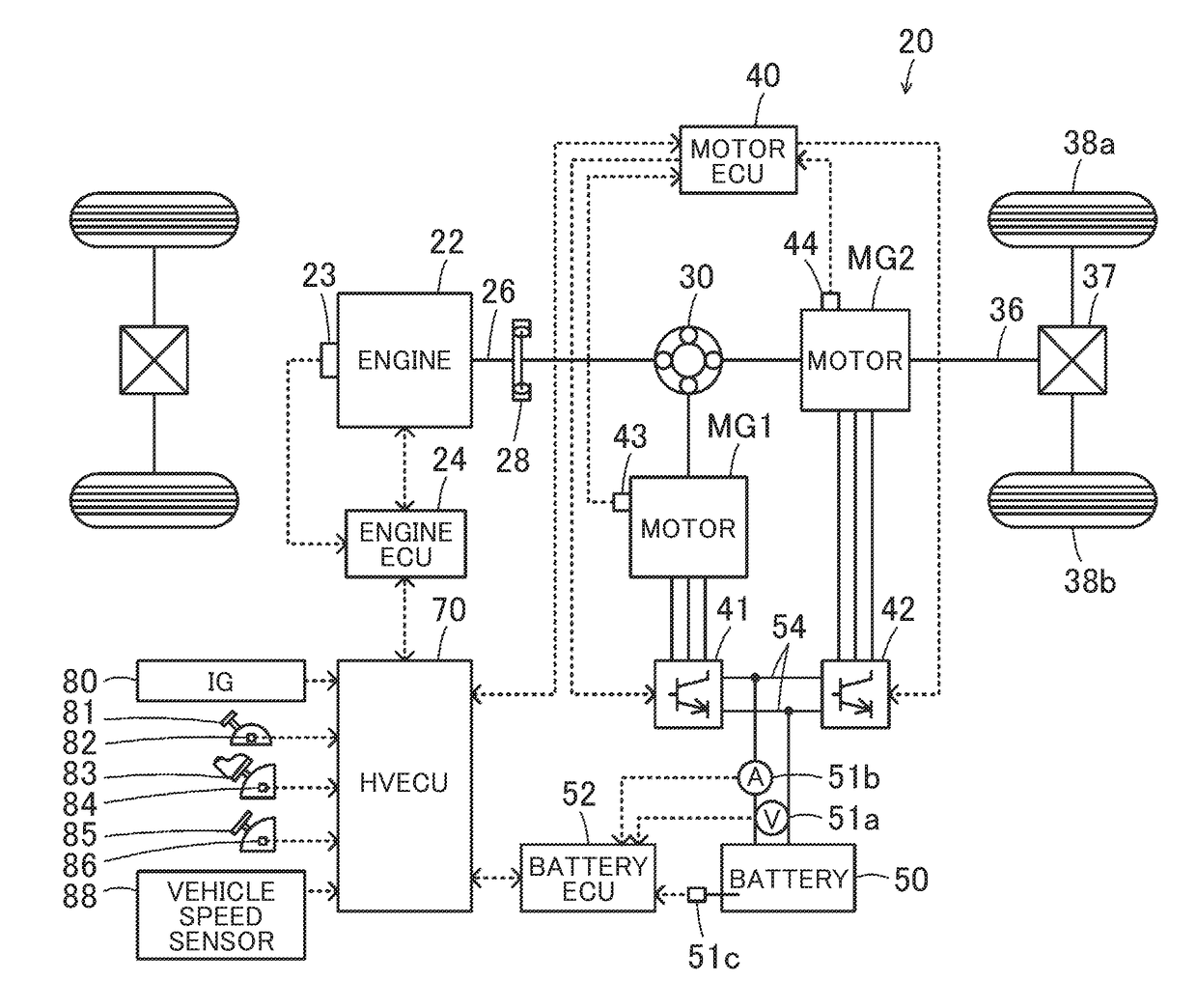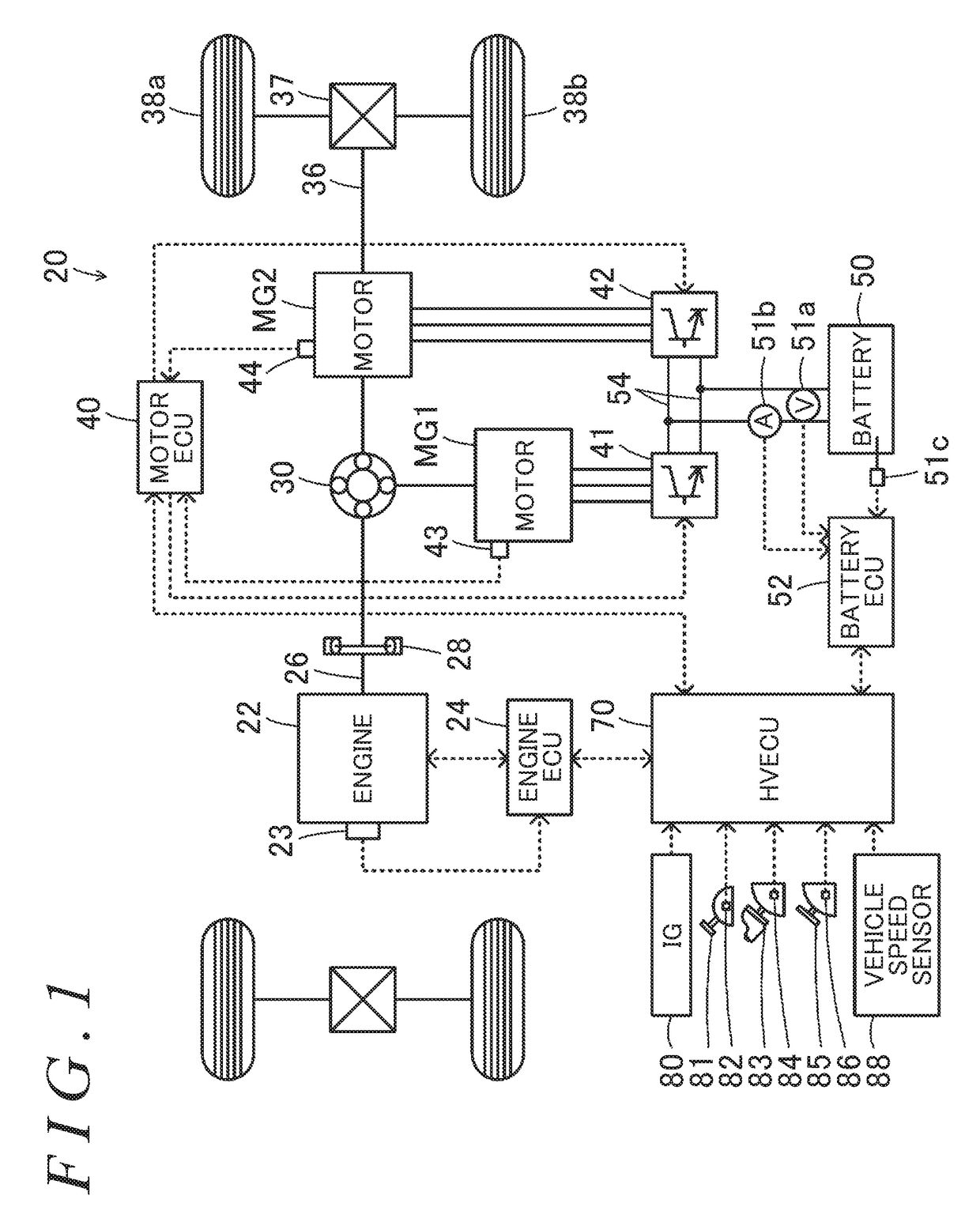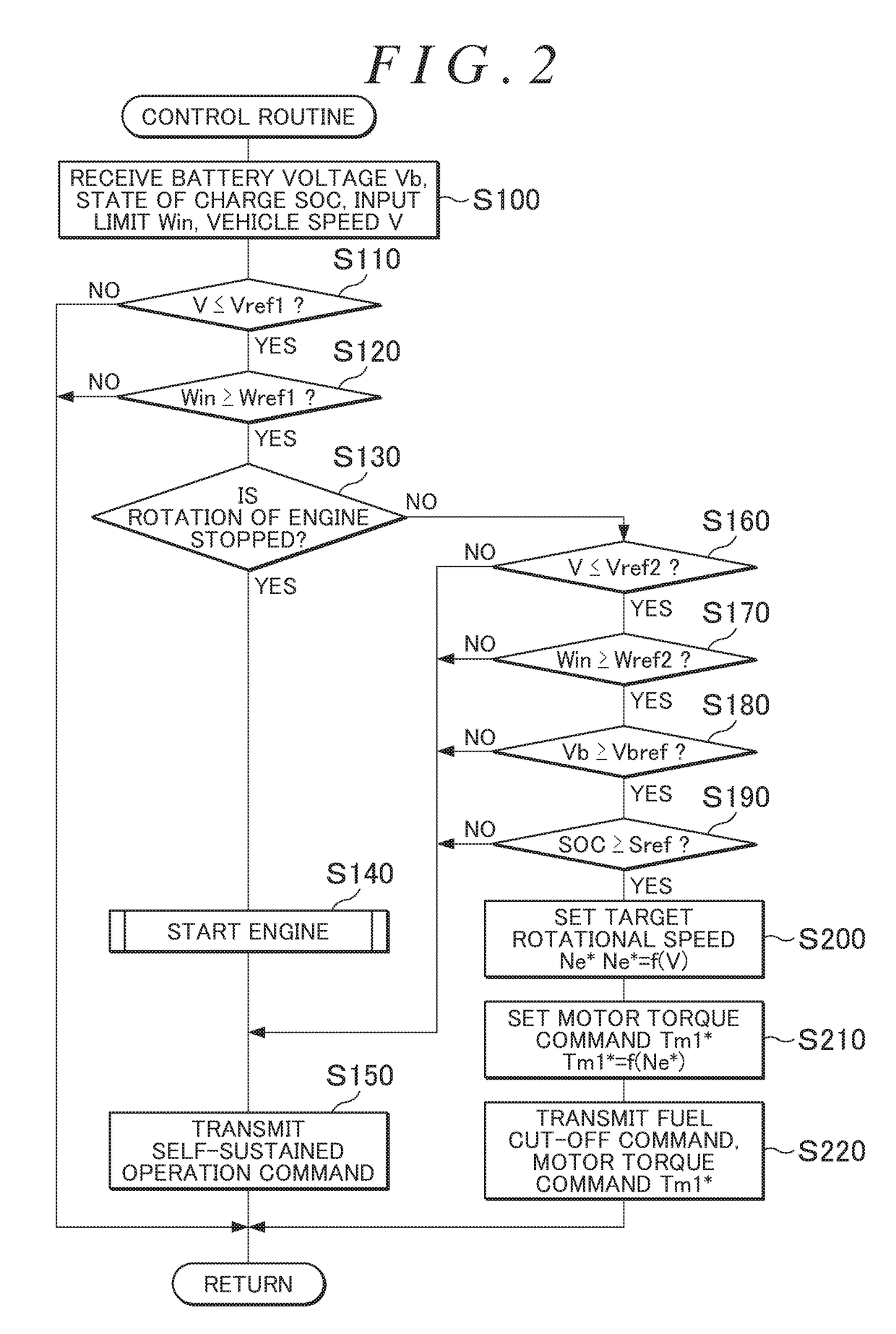Hybrid vehicle
a hybrid vehicle and hybrid technology, applied in the field of hybrid vehicles, can solve the problems of long time to increase the possibility of relatively significant torque of the second motor, and the long time to increase the rotational speed of the engine, so as to prevent torque (regenerative torque), the effect of rapid increase of the electric power consumption of the first motor and quick increase of the engine rotational speed
- Summary
- Abstract
- Description
- Claims
- Application Information
AI Technical Summary
Benefits of technology
Problems solved by technology
Method used
Image
Examples
Embodiment Construction
[0014]An embodiment of the invention will be described with reference to the drawings.
[0015]FIG. 1 is a configuration diagram that schematically shows a configuration of a hybrid vehicle 20 according to the embodiment of the invention. As shown in FIG. 1, the hybrid vehicle 20 of the embodiment includes an engine 22, a planetary gear 30, motors MG1, MG2, inverters 41, 42, a battery 50, and a hybrid electronic control unit (hereinafter referred to as an “HVECU”) 70.
[0016]The engine 22 is configured as an internal combustion engine that outputs power by using fuel such as gasoline or diesel fuel. An operation of this engine 22 is controlled by an engine electronic control unit (hereinafter referred to as an “engine ECU”) 24.
[0017]Although not shown, the engine ECU 24 is configured as a microprocessor that includes a Central Processing Unit (CPU) as a central component, and further includes, in addition to the CPU, a Read-Only Memory (ROM) that stores a processing program, a Random-Acc...
PUM
 Login to View More
Login to View More Abstract
Description
Claims
Application Information
 Login to View More
Login to View More - R&D
- Intellectual Property
- Life Sciences
- Materials
- Tech Scout
- Unparalleled Data Quality
- Higher Quality Content
- 60% Fewer Hallucinations
Browse by: Latest US Patents, China's latest patents, Technical Efficacy Thesaurus, Application Domain, Technology Topic, Popular Technical Reports.
© 2025 PatSnap. All rights reserved.Legal|Privacy policy|Modern Slavery Act Transparency Statement|Sitemap|About US| Contact US: help@patsnap.com



